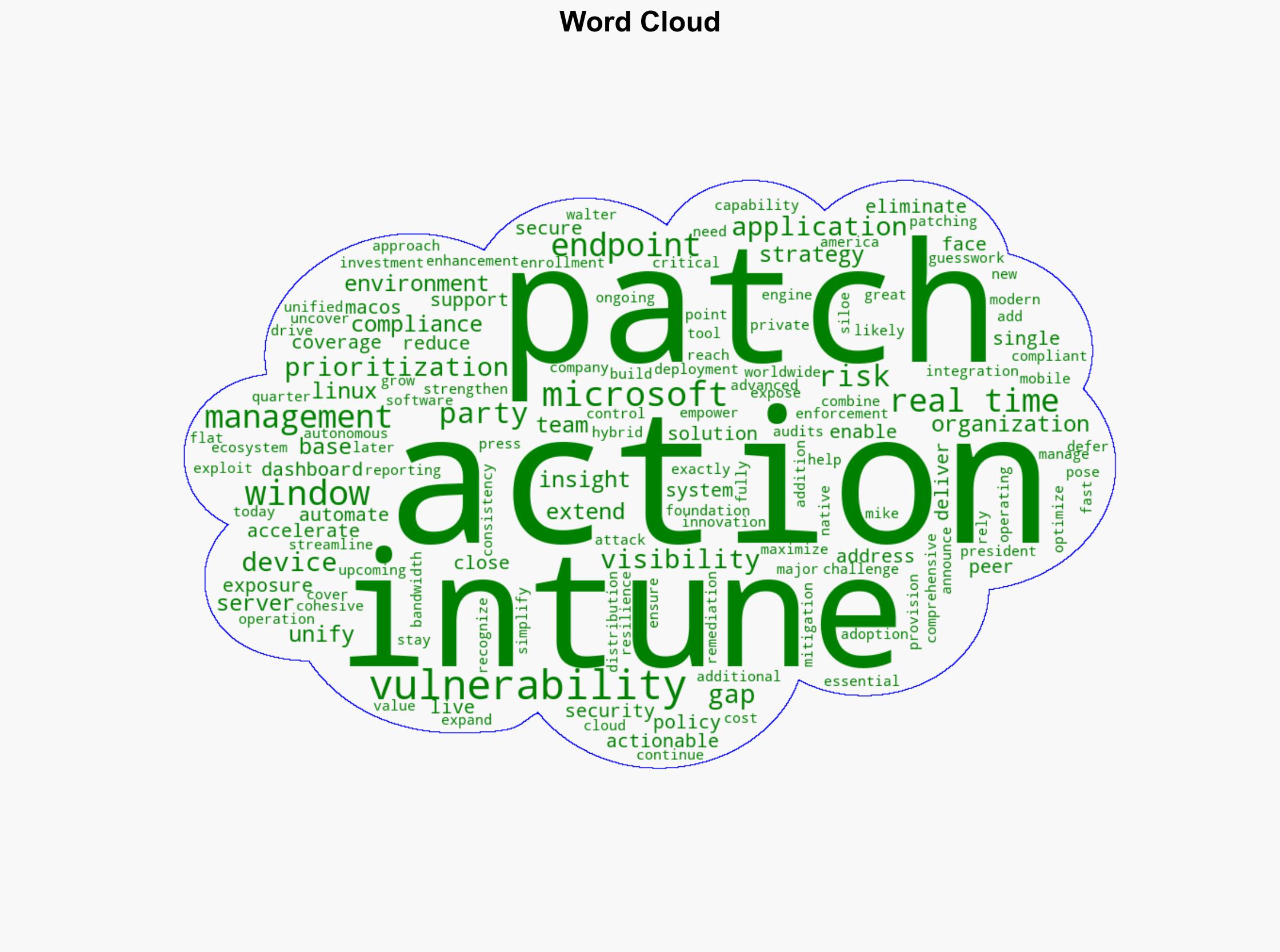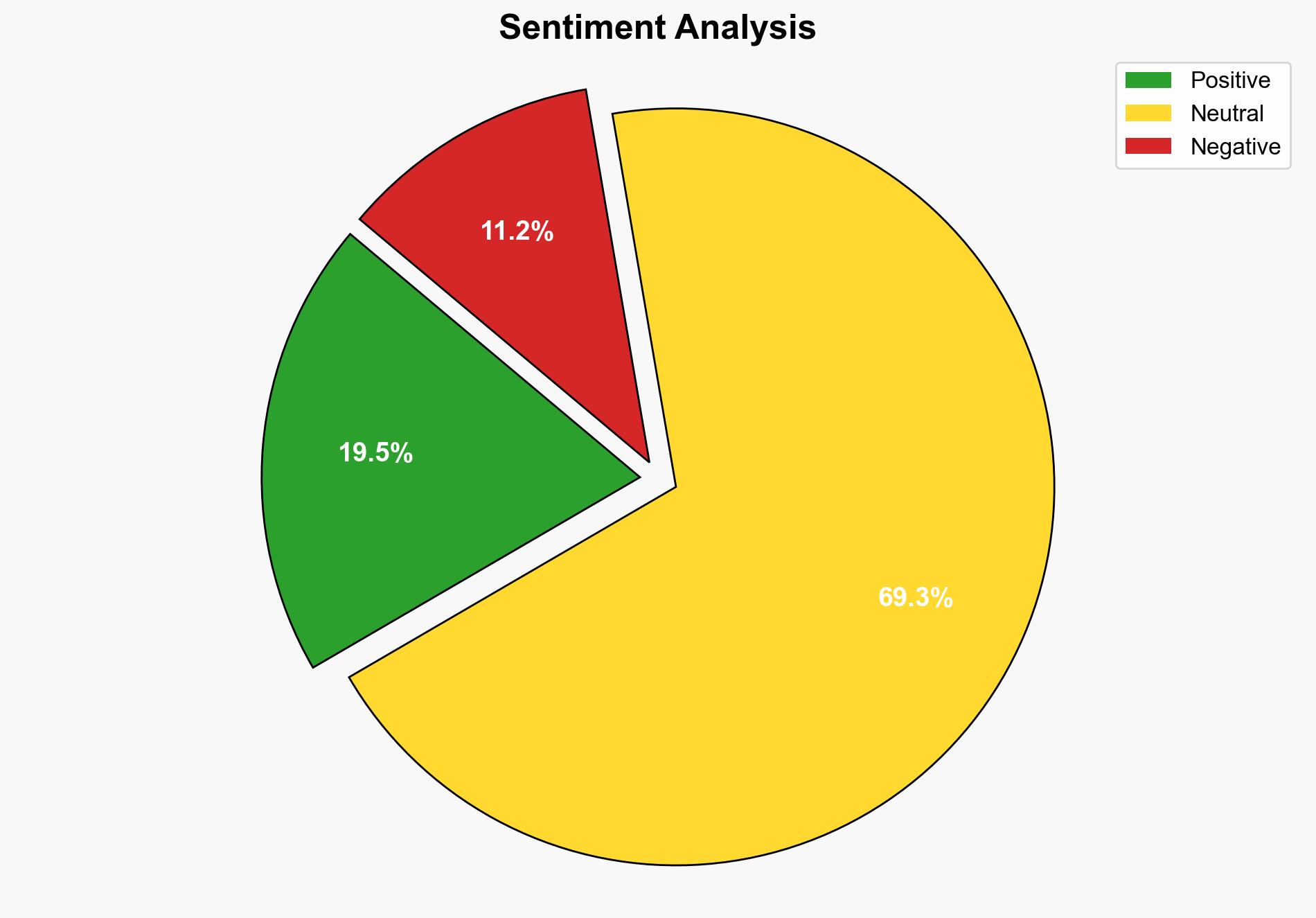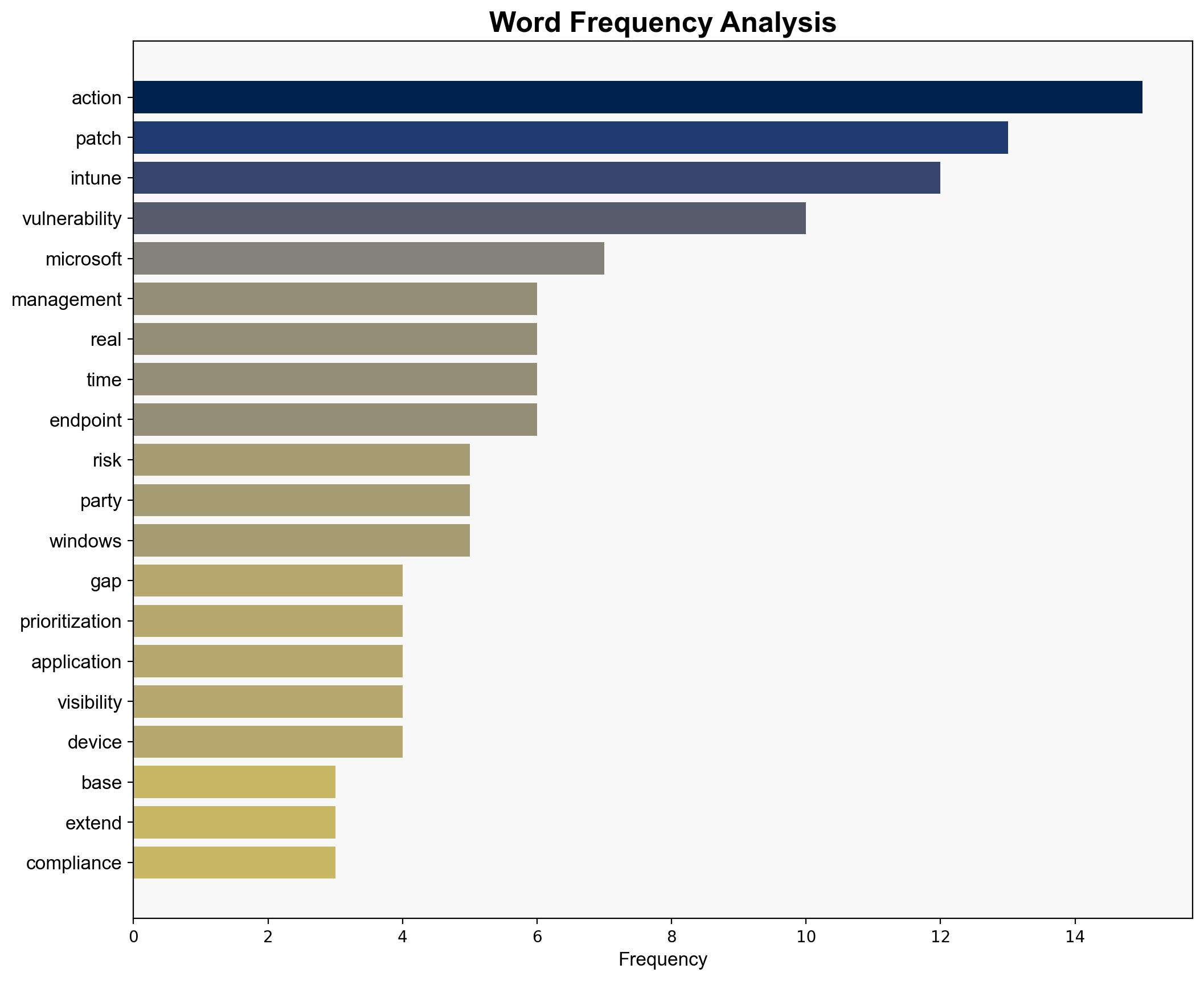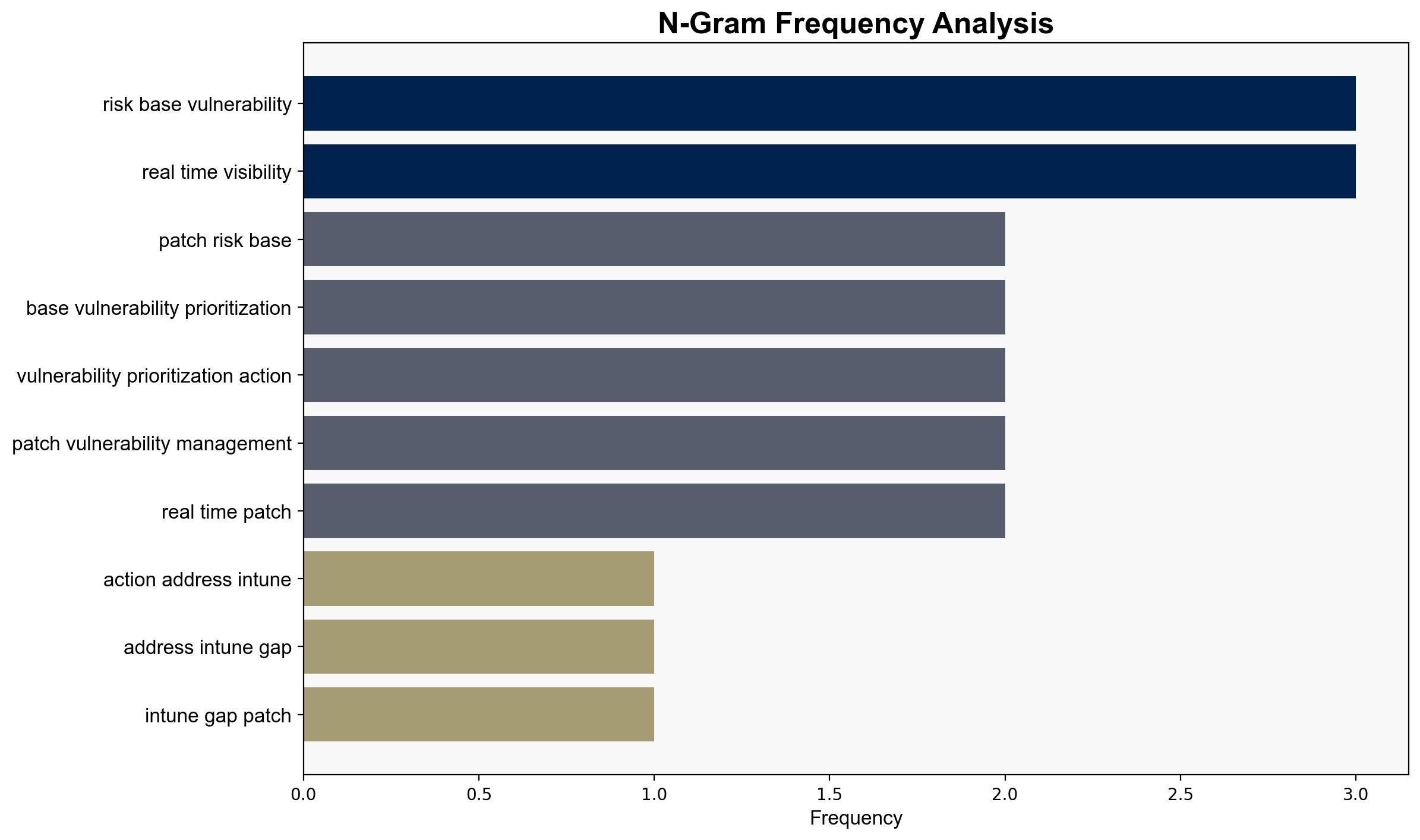Action1 addresses Intune gaps with patching and risk-based vulnerability prioritization – Help Net Security
Published on: 2025-11-11
AI-powered OSINT brief from verified open sources. Automated NLP signal extraction with human verification. See our Methodology and Why WorldWideWatchers.
Intelligence Report: Action1 addresses Intune gaps with patching and risk-based vulnerability prioritization – Help Net Security
1. BLUF (Bottom Line Up Front)
Action1’s integration with Microsoft Intune to enhance patch management and vulnerability prioritization is likely to significantly improve endpoint security and operational efficiency for organizations using Intune. This initiative is assessed with a high confidence level as it addresses critical gaps in third-party application patching and risk management. Organizations should consider adopting this solution to streamline their cybersecurity operations and maximize their investment in Microsoft Intune.
2. Competing Hypotheses
Hypothesis 1: Action1’s integration will successfully close existing gaps in Intune, providing comprehensive third-party application patching and risk-based vulnerability prioritization, thereby enhancing security and operational efficiency.
Hypothesis 2: Action1’s integration may face implementation challenges or limitations that prevent it from fully addressing the gaps in Intune, resulting in only marginal improvements in security and efficiency.
Hypothesis 1 is more likely due to Action1’s established track record in patch management and the strategic alignment with Microsoft Intune’s capabilities. The comprehensive approach and real-time insights offered by Action1 are designed to address specific pain points in current Intune deployments.
3. Key Assumptions and Red Flags
Assumptions:
- Action1’s technology is compatible with existing Microsoft Intune deployments.
- Organizations have the necessary infrastructure and resources to implement the integration effectively.
Red Flags:
- Potential over-reliance on Microsoft ecosystem could limit flexibility in cybersecurity strategies.
- Possible underestimation of the complexity involved in integrating third-party applications.
4. Implications and Strategic Risks
The successful integration of Action1 with Microsoft Intune could lead to a significant reduction in cybersecurity risks associated with unpatched vulnerabilities. However, failure to address integration challenges could result in continued exposure to cyber threats and operational inefficiencies. Additionally, the concentration of cybersecurity solutions within the Microsoft ecosystem could pose risks if vulnerabilities are discovered within the platform itself.
5. Recommendations and Outlook
- Actionable Steps: Organizations should conduct a thorough assessment of their current Intune deployments and identify specific gaps that Action1 can address. They should also ensure adequate training and resources are allocated for the integration process.
- Best Scenario: Seamless integration leads to enhanced security posture and operational efficiency, with reduced vulnerability exposure.
- Worst Scenario: Integration challenges lead to minimal improvements, leaving organizations vulnerable to cyber threats.
- Most-likely Scenario: Incremental improvements in security and efficiency as organizations adapt to the new integration.
6. Key Individuals and Entities
Mike Walter: President of Action1, a key figure in driving the integration and strategic alignment with Microsoft Intune.
7. Thematic Tags
Cybersecurity
Structured Analytic Techniques Applied
- Adversarial Threat Simulation: Model and simulate actions of cyber adversaries to anticipate vulnerabilities and improve resilience.
- Indicators Development: Detect and monitor behavioral or technical anomalies across systems for early threat detection.
- Bayesian Scenario Modeling: Quantify uncertainty and predict cyberattack pathways using probabilistic inference.
Explore more:
Cybersecurity Briefs ·
Daily Summary ·
Methodology





